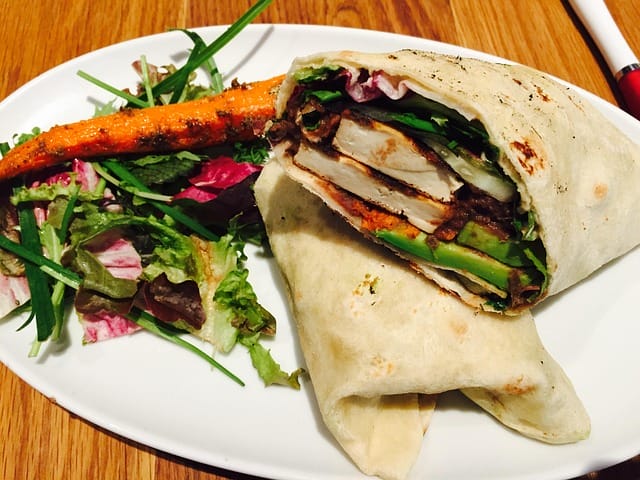In recent years, the rise of social media and online platforms has made it easier than ever for home cooks and professional chefs alike to share their passion for cooking with a global audience. An online specialty cooking video series can be a lucrative business opportunity, but it requires careful planning, attention to detail, and a commitment to producing high-quality content.
In this blog post, we’ll take you through the step-by-step process of creating a successful online specialty cooking video series, from conceptualization to launch and beyond. Whether you’re a seasoned chef or an aspiring home cook, this guide will provide you with the tools and strategies needed to create a thriving online presence in the culinary world.
Step 1: Define Your Niche
Before diving into production, it’s essential to define your niche. What type of specialty cooking do you want to focus on? Will it be:
Cultural cuisine: Explore traditional dishes from specific countries or regions.
Dietary-specific cooking: Focus on vegetarian, vegan, gluten-free, or keto recipes.
Ingredient-based specialties: Highlight unique ingredients like seafood, game meats, or exotic spices.
Skill-building content: Share techniques and tips for advanced cooks, such as knife skills, pastry-making, or sous vide.
Identifying your niche will help you create content that resonates with a specific audience and sets you apart from other cooking shows and channels.
Step 2: Develop Your Concept
Once you’ve defined your niche, it’s time to develop a concept for your series. Consider the following:
Target audience: Who are they, and what do they want to learn or experience?
Content format: Will each video be 5-10 minutes long, or will you opt for longer, more in-depth episodes?
Tone and style: Do you want your videos to be formal and informative, or lighthearted and entertaining?
Visuals and graphics: How will you enhance the viewing experience with images, animations, or text overlays?
Create a detailed outline of your concept, including any specific themes, challenges, or goals for each episode.
Step 3: Invest in Quality Equipment
Investing in quality equipment is crucial for producing professional-looking videos. Here are some essentials to consider:
Camera: Choose a high-resolution camera with good low-light performance, such as a DSLR or mirrorless model.
Microphone: Select a lavalier or shotgun microphone to ensure clear audio and reduce background noise.
Lighting: Invest in a basic lighting kit that includes a key light, fill light, and backlight.
Editing software: Choose a user-friendly editing platform like Adobe Premiere Pro, Final Cut Pro, or DaVinci Resolve.
Step 4: Plan Your Content Calendar
To ensure consistency and engagement with your audience, create a content calendar that outlines:
Episode schedule: Plan out the release dates for each episode.
Recipe selection: Choose recipes that fit your niche and showcase your skills.
Storytelling approach: Decide on the narrative structure for each episode, including introductions, cooking demonstrations, and wrap-ups.
Step 5: Develop Your Brand
Your brand is what sets you apart from other cooking channels. Consider:
Logo design: Create a visually appealing logo that reflects your niche and style.
Color scheme: Choose a palette of colors that complements your branding and makes your videos recognizable.
Social media presence: Establish a strong online presence across platforms like Instagram, Facebook, and Twitter.
Step 6: Record High-Quality Footage
To create engaging content, you’ll need to focus on producing high-quality footage. Here are some tips:
Script out your episodes: Write a detailed script for each episode, including introduction, cooking demonstration, and wrap-up.
Use proper camera angles: Experiment with different camera angles, such as close-ups, over-the-shoulder shots, or wide shots.
Pay attention to lighting: Use natural light whenever possible, but also invest in quality lighting equipment to ensure consistent results.
Step 7: Edit and Post-Production
Editing is where the magic happens. Here are some essential editing tips:
Keep it concise: Aim for a clear narrative structure that keeps viewers engaged.
Add visuals and graphics: Incorporate images, animations, or text overlays to enhance the viewing experience.
Optimize audio levels: Ensure your audio levels are balanced and clear.
Step 8: Promote Your Series
To reach a wider audience, it’s essential to promote your series effectively. Here are some strategies:
Social media marketing: Share behind-the-scenes content, sneak peeks, or teasers on social media platforms.
Collaborate with influencers: Partner with food bloggers, influencers, or other chefs in your niche to expand your reach.
Email newsletter: Build an email list and send out regular newsletters with updates, recipes, or exclusive content.
Step 9: Engage with Your Audience
Building a loyal audience takes time and effort. Here are some ways to engage with viewers:
Respond to comments: Encourage conversation by responding to comments and answering questions.
Host live cooking sessions: Host live cooking sessions on platforms like YouTube Live or Facebook Live.
Share user-generated content: Feature your viewers’ creations, recipes, or stories.
Step 10: Analyze and Adapt
To continuously improve, analyze your performance using:
YouTube Analytics: Monitor metrics such as views, engagement, and audience retention.
Social media insights: Track engagement rates, follower growth, and hashtag performance.
Audience feedback: Gather feedback from viewers to adjust your content and format.
By following these steps and tips, you can create a successful online specialty cooking video series that showcases your passion for cooking and connects with a global audience. Remember to stay flexible, adapt to changes, and continually improve your craft to build a loyal following and achieve success in the culinary world.

